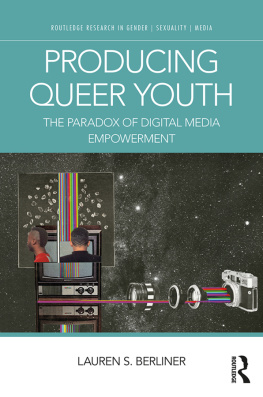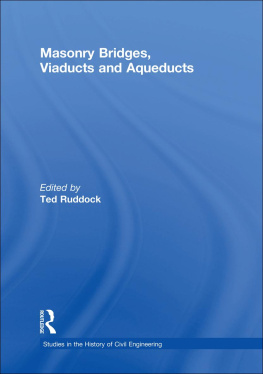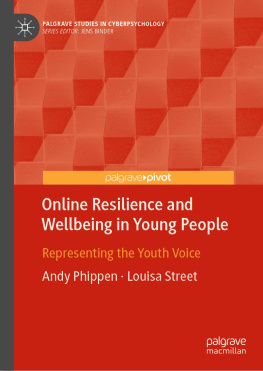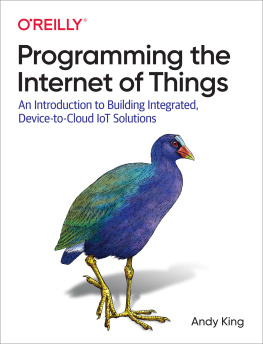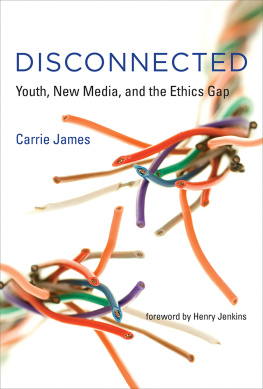ANDY RUDDOCK
YOUTH
AND
MEDIA
SAGE Publications Ltd
1 Olivers Yard
55 City Road
London EC1Y 1SP
SAGE Publications Inc.
2455 Teller Road
Thousand Oaks, California 91320
SAGE Publications India Pvt Ltd
B 1/I 1 Mohan Cooperative Industrial Area
Mathura Road
New Delhi 110 044
SAGE Publications Asia-Pacific Pte Ltd
3 Church Street
#10-04 Samsung Hub
Singapore 049483
Editor: Mila Steele
Editorial assistant: James Piper
Production editor: Imogen Roome
Copyeditor: Solveig Gardner Servian
Proofreader: Neil Dowden
Marketing manager: Michael Ainsley
Cover design: Francis Kenny
Typeset by: C&M Digitals (P) Ltd, Chennai, India
Printed and bound by CPI Group (UK) Ltd,
Croydon, CR0 4YY
Andy Ruddock, 2013
First published 2013
Apart from any fair dealing for the purposes of research or private study, or criticism or review, as permitted under the Copyright, Designs and Patents Act, 1988, this publication may be reproduced, stored or transmitted in any form, or by any means, only with the prior permission in writing of the publishers, or in the case of reprographic reproduction, in accordance with the terms of licences issued by the Copyright Licensing Agency. Enquiries concerning reproduction outside those terms should be sent to the publishers.
Library of Congress Control Number: 2012946400
British Library Cataloguing in Publication data
A catalogue record for this book is available from the British Library
ISBN 978-1-84860-091-1
ISBN 978-1-84860-092-8 (pbk)
Dedicated with much love to Jian Shi and
our daughter Zhenni Shi Ruddock, born on 20 February 2011
CONTENTS
ACKNOWLEDGEMENTS
Id like to thank my many co-authors and editors who have, in the course of working with me on different projects, given vital help in articulating the ideas behind Youth and Media. The chance to collaborate with Brett Hutchins and David Rowe has been especially appreciated, and I owe a huge debt of thanks to James Nicholls for our advice on alcohol research. Virginia Nightingale, Jim Shanahan, Michael Morgan, Nancy Signorelli, Helena Bilandzic, Geoffroy Patriarche, Paul Traudt, Johanna Sumiala, Glenn Muschert and Lemi Baruh have all given invaluable guidance on my writing. Your time has been much appreciated.
Ive also been very lucky to have expert eyes cast over drafts, and thanks go to Nick Couldry, Jukka Jouhki, Graham Meikle, James Stanyer, Andrys Onsman and Philip Flavin for their help. Special thanks to James for giving me early access to his excellent book.
Writing this was hard, but it was much easier than having a c-section, or spending your first two weeks of life in an incubator with a tube up your nose. Love and admiration to the redoubtable Jian Shi and our little Zhenni. Gratitude and love to Zhang Chen Xiang, Shi Qin Qun and Christine Ruddock for being around when we needed them.
As ever, this is written in the memory of David Ruddock, who served crown and country for 39 of his 57 years, and without whom nothing would have been written.
WHY YOUTH MEDIA?
WHY MEDIA, WHY YOUTH, WHY RESEARCH?
In 2012, the organisation Invisible Children tried to raise global awareness about child abuse in Africa by releasing the documentary Kony 2012 on YouTube. The video was named after Joseph Kony, leader of a rebel Ugandan-based paramilitary group called the Lords Resistance Army (LRA). Since the late 1980s, the LRA has been responsible for numerous human-rights crimes in several African countries. Many of its victims have been children, including tens of thousands forced into military service (BBC News Africa, 2102). Kony was wanted for war crimes by the International Criminal Court, but until Kony 2012 few people knew about him. Within four days of its YouTube release, 50 million people had seen the documentary, numerous celebrities enthusiastically urged their fans to check it out, and the Obama administration was praising the thousands of Americans who had helped to raise awareness about the warlord and his crimes (Molloy, 2012). The video had been targeted at high-school students (Curtis, 2012), and was most watched by 1317-year-olds (Shaughnessy, 2012). Young social media users appeared to be on the cusp of making the world a better place.
Kony 2012, it seemed, showed media at their best: depicting the world as it is, making young people care about injustices and encouraging them to do things to ensure that such horrors are never repeated. But many critics urged caution. Kony 2012 was pilloried for oversimplifying the complexities of African history, Invisible Childrens motives were questioned, and young social media users were ridiculed for thinking that sharing and liking online materials could change the world.
Whatever its merits, Kony 2012 provoked an interesting discussion about media influence. What do we want media to do in the world? What are some of the practical problems in making media a force for good? What kinds of effects do media have? Where and when should we look for them? For example, should anyone have expected Kony 2012 to change the world, directly? What if todays young slactivists have at least started to think about their peers in other parts of the world? What outcomes might this sensitivity produce in the future? All of this boils down to three important questions: Why do media matter? Why do young people feature so prominently in contemplations on this issue? What are the different ways that scholars have conceived and researched media influence, as it is experienced among young people? These are the concerns of this book.
MEDIA, YOUTH AND SOCIETY
So, this book is really about conceiving and researching the social influence of media, with a particular focus on how young people experience the world as young people. When one speaks of media influence, its tempting to focus on various ways that media are said to damage our social fabric. The idea that media harm society, and that young audiences are especially vulnerable in this regard, is a familiar refrain. Media are frequently blamed for making young people think and act anti-socially. When South Africas murder rate increased by 130 per cent in the decade after the introduction of broadcast television in 1976, critics blamed the nations first television generation (Beresin, 1999). In the US, former army psychologist David Grossman apocalyptically warned the lurid capacities of films and video games had become so adept at short-circuiting the natural human aversion to violence in the minds of young audiences that the situation warranted its own science killology. In Stop Teaching Our Kids to Kill: A call to action against TV, movie and video game violence (1999), Grossman and Degaetano argued that video games dont just glamorise violence; they teach teens how to be good at it. Their thesis was inspired by Michael Carneal, a 14-year-old Kentucky high-school student who stole a gun and hit eight peers with eight shots despite, he claimed, having only practised his marksmanship on video games.





